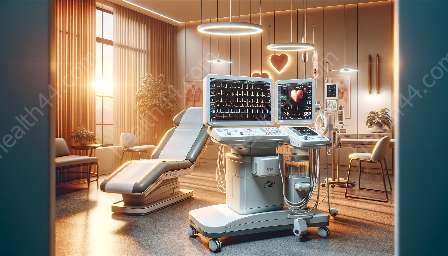Cardiac event monitoring and loop recorders are crucial medical devices used to monitor and record heart activity. These devices are compatible with ECG/EKG machines along with various other medical devices and equipment, making them valuable tools in managing and understanding cardiac health.
Here, we will delve into the topic in detail, covering the functioning of cardiac event monitoring and loop recorders, their compatibility with ECG/EKG machines, and how they integrate with other medical devices and equipment.
The Role of Cardiac Event Monitoring and Loop Recorders
Cardiac Event Monitoring:
Cardiac event monitoring is used to record the heart's electrical activity over an extended period. This type of monitoring is especially useful for individuals who experience intermittent symptoms, such as palpitations, dizziness, or fainting, which may indicate an underlying cardiac condition.
The device is worn by the patient and continuously records the heart's electrical signals. When the patient experiences symptoms, they can activate the monitor to record and store the heart's activity during the episode. This data is then transmitted to a monitoring center for analysis by healthcare professionals.
Loop Recorders:
Loop recorders are implantable devices that continuously monitor and record the heart's electrical activity. They are typically recommended for patients who experience infrequent or unexplained symptoms that may be related to an underlying heart condition.
Loop recorders automatically store and retain data related to abnormal heart rhythms. When the patient experiences symptoms, they can activate the device to record and save the heart's activity during the episode for later review by healthcare providers.
Compatibility with ECG/EKG Machines
EKG/ECG Machines:
Electrocardiogram (ECG/EKG) machines are fundamental in the diagnosis and monitoring of heart conditions. These machines record the electrical activity of the heart through electrodes placed on the patient's skin, producing a visual representation of the heart's rhythms.
Cardiac event monitoring and loop recorders complement the functionality of ECG/EKG machines. Both of these devices provide valuable long-term data, capturing episodes and irregular patterns that may not be captured during standard ECG/EKG tests performed in a clinical setting.
By integrating the data from these monitoring devices with ECG/EKG findings, healthcare providers can gain a comprehensive understanding of a patient's cardiac health and make informed decisions regarding diagnosis and treatment.
Integration with Medical Devices and Equipment
Other Medical Devices and Equipment:
Cardiac event monitoring and loop recorders are designed to integrate seamlessly with various other medical devices and equipment used in cardiac care. This includes compatible software, remote monitoring systems, and connectivity features that enable seamless data transfer and analysis.
For instance, cardiac event monitoring and loop recorders often come with software that allows healthcare professionals to remotely access and review the recorded data. The integration with medical devices and equipment facilitates efficient communication and collaboration among care providers, ultimately leading to improved patient care and outcomes.
Conclusion
In conclusion, cardiac event monitoring and loop recorders play a critical role in the diagnosis and management of cardiac conditions. Their compatibility with ECG/EKG machines and other medical devices and equipment enhances their utility and contributes to a more comprehensive approach to monitoring and understanding cardiac health. By leveraging these advanced technologies, healthcare providers can deliver personalized care and make evidence-based decisions to improve patient outcomes.


